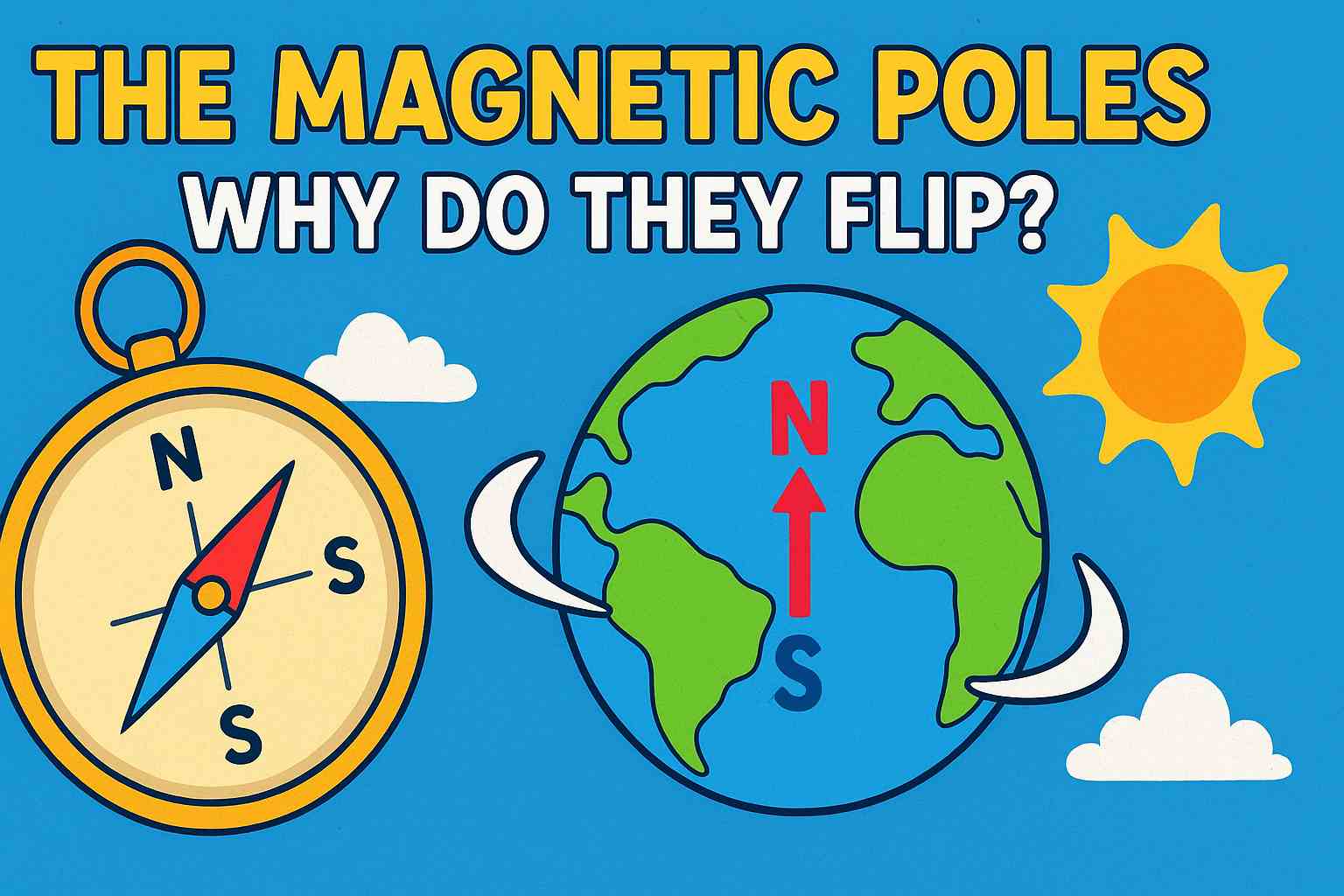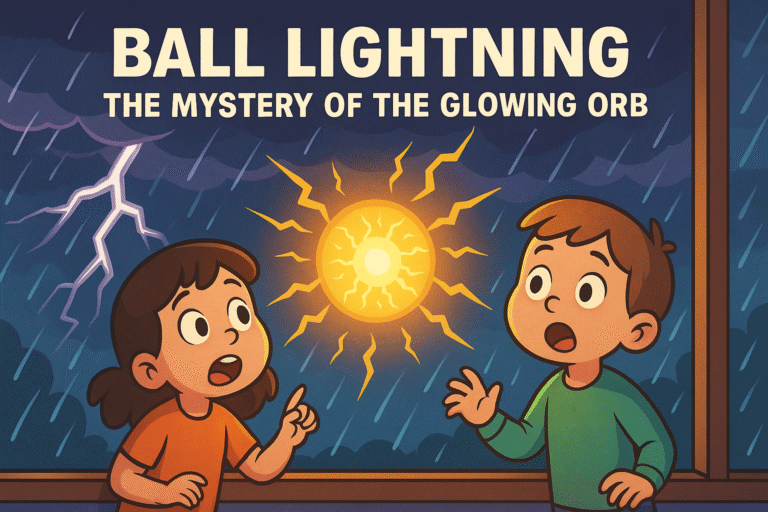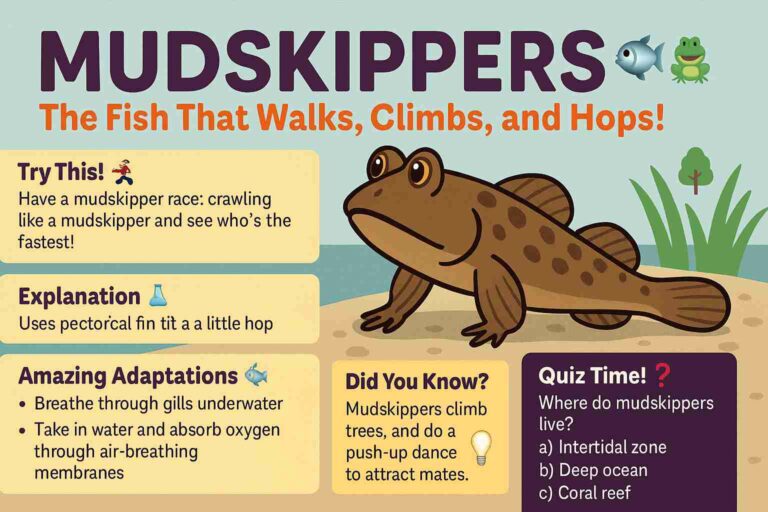
Science Mysteries for Curious Kids
A World Turned Upside Down
Imagine waking up one morning and discovering that your compass no longer points north — it points south! 😲 Sounds like something out of a wizard’s spellbook, right? But this is a real scientific mystery: the Earth’s magnetic poles sometimes flip!
It doesn’t happen overnight like a magic trick — it takes thousands of years. But scientists are still asking: Why does it happen at all?
Background: The Earth’s Invisible Shield
The Earth is like a giant magnet. Deep under our feet, hot liquid metal swirls around in the outer core. This movement creates the Earth’s magnetic field — an invisible shield that protects us from the Sun’s dangerous radiation and solar winds. 🌞🛡️
At the top and bottom of the planet, we have the North Magnetic Pole and the South Magnetic Pole. These aren’t in the same exact spots as the geographic North and South Poles (where Santa lives and penguins play 🐧🎅).
Here’s the twist: over Earth’s history, the magnetic poles have flipped places hundreds of times! Scientists call this a geomagnetic reversal.
Theories: Why Do the Poles Flip?
- Core Chaos 🌋
The swirling molten iron in Earth’s core doesn’t always flow smoothly. Sometimes, the currents twist and tangle, causing the magnetic field to weaken, wobble, and eventually flip. - Magnetic Weak Spots ⚡
Scientists think certain regions of Earth may develop “weak spots” in the magnetic field. Over time, these spots spread and trigger a pole reversal. - Random Cosmic Timing 🌌
There might not be a clear pattern at all. Some flips happen after 200,000 years, others after 800,000 years. It could just be the Earth’s natural, unpredictable rhythm. - Human Myths 🧙
Long ago, people thought pole flips could mean the end of the world. But don’t worry — scientists say life on Earth will survive just fine.
Fun Facts to Spark Curiosity
- The last major flip happened about 780,000 years ago.
- During a flip, the magnetic field gets weaker, so auroras (northern lights) might appear in places you wouldn’t expect — maybe even near the equator! 🌈
- Compasses would point in opposite directions, but animals like birds, turtles, and whales that use magnetism to navigate would slowly adapt.
- Earth’s magnetic field isn’t static — the North Magnetic Pole is actually drifting across the Arctic Ocean right now at about 40 km (25 miles) per year!
🧩 Interactive Mystery Challenge
Quick Quiz:
- What creates Earth’s magnetic field?
A) Swirling molten iron in the core
B) Ice at the poles
C) Volcanoes - About how long ago did the last pole flip happen?
A) 78 years
B) 7,800 years
C) 780,000 years
(Answers: 1 → A, 2 → C)
Think Like a Scientist:
If the North Magnetic Pole keeps moving at 40 km per year, how far will it drift in 50 years?
(Hint: Multiply 40 × 50)
Why It Matters for the Future
Studying pole flips helps scientists understand the core of our planet, protect our satellites, and even prepare for changes in technology like GPS navigation. Imagine planes, ships, and explorers all having to adjust their maps!
Encouragement to Explore
The mystery of flipping poles shows us that even the Earth isn’t as steady as it seems. 🌍✨ So the next time you use a compass, think about this: one day, in the far future, it might point south instead of north.
Could you be the scientist who finally solves the riddle of Earth’s dancing poles?






